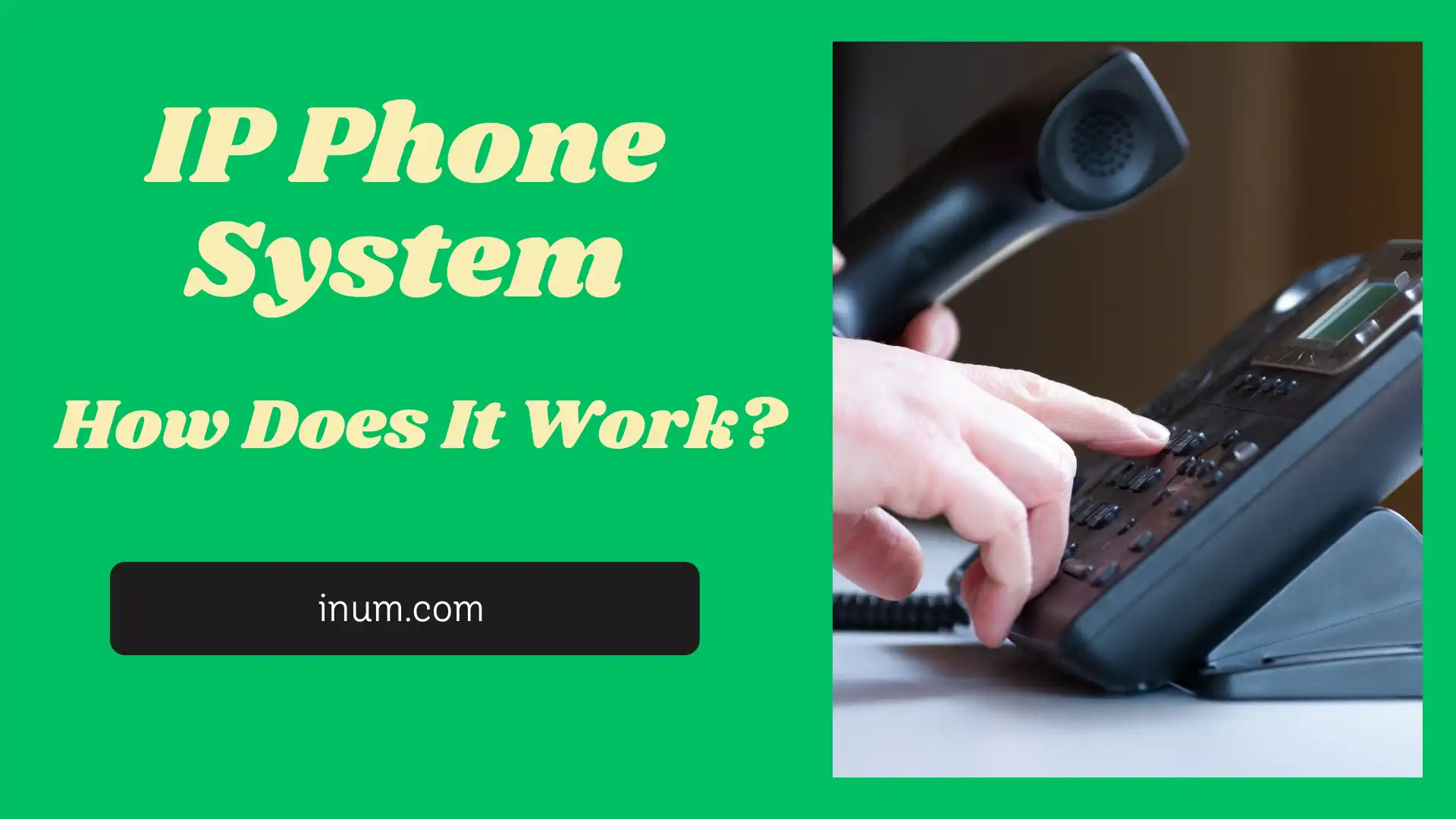Traditional landline phones used to use circuit-switched networks decades ago in making calls. However, in recent years, voice communications have been replaced by Internet Protocol (IP) telephony.
IP telephony systems allow unified communications through voice, video, messaging, fax and conferencing among others at a significantly reduced cost since they transmit voice conversations across data networks instead of traditional phone lines.
The IP phone industry worldwide is worth more than 20 billion and this is projected to keep on increasing over the next few years. Companies should move forward and leverage on this new technology.
In this blog, we are going to talk about what IP telephony is, how it works, and how you can use it to enhance customer communications.
What Is IP Phone System?
Internet Protocol Telephony (IP telephony) is a term used to refer to any telephone system that transmits and/or receives voice information via the internet.
IP phones are linked to the internet through a router and modem, unlike a normal telephone, which transmits an analog signal through the landlines.
The earliest publicly available IP phone was released already in 1995. However, in comparison with a standard phone system, it was of poor audio quality and it was too costly.
The internet-based phone technology has since then enhanced through leaps and bounds. IP telephony currently has HD voice quality, lower cost of running and more business phone features.
And the up-front investment requirement is minimal. IP telephony does not end with voice calls. These are some additional uses of it.
- Video calling
- Audio and video conferencing
- Text messaging
- Instant messaging
- Faxing
How Does an IP Phone System Work?
The Internet protocol (IP), which is the basic data communication protocol of the Internet and the current networks, is used by IP telephone systems to transmit voice communications via the Internet or other modern digital protocols.
The IP telephony converts analog voice signals into data packets which are sent over the Internet Protocol. As the data packets pass through networks, they are passed through devices like a router, which reads the packet header and routes them to their respective destinations.
The key protocols that facilitate IP telephony are SIP, signaling and call session management; RTP (Real-Time Transport Protocol) and RTCP (Real-Time Transport Control Protocol); voice media streams; H.323, a call control and signaling protocol; and a previous VoIP protocol.
Upon the packets reaching their destination, the software reassembles the packets in the proper sequence to create the voice stream again.
In case you are on an IP PBX system, the information is digitally transferred on the Local Area Network (LAN), which is converted to analog voice channels and transmitted to the Public Switched Telephone Network (PSTN).
Nonetheless, due to the high hardware and installation cost, IP PBX can no longer be the top solution.
The hosted VoIP has gained popularity as an IP telephony solution. It allows businesses to benefit by exploiting the advanced PBX without installing the software on their premises.
Major IP Telephony System Components
The IP telephony systems have various components that are significant, and which collaborate with each other to support voice communications across the IP networks. These include:
i. IP PBX
The IP PBX, also known as Private Branch Exchange, is the main switching and control device of the IP telephony system. It takes care of call routing, voicemail and others.
ii. Softphones
Softphones are hardware phone replacements in the form of software. They can be run on computers or a mobile device and enable the user to make or receive calls directly on their devices.
iii. VoIP Gateways
VoIP gateways bridge the gap between IP telephony systems and the PSTN allowing them to make and receive calls to and from normal phone numbers.
iv. Session Border Controllers (SBCs)
SBCs provide protection and control of the IP telephony traffic, which serves with security and management capabilities. They can guarantee that only legitimate users can gain access to the network and prevent illegitimate access and attacks.
v. Network Infrastructure
A sound and stable network infrastructure is one of the requirements that facilitates IP telephony. This encompasses high-speed network connections, sufficient bandwidth, as well as proper arrangement of the networks.
Benefits of IP Phone System
VoIP Phones have the highest number of software purchasers as compared to other voice services.
i. Reduced Costs
VoIP is much less expensive as compared to conventional business plans. A similar business landline plan would cost you 50% more than an unlimited VoIP plan would cost.
ii. Better Functionalities without Additional Equipment
IP telephony enables the user to enjoy some of the best features such as advanced call routing, call recording, instant messaging and video conferencing without necessarily incurring the cost of additional hardware.
iii. Increased Accessibility
In IP telephony, you are able to make and receive calls anywhere in the world, provided the user has an internet connection.
The users can make and take calls through their computers and mobile phones or any other device with a softphone or VoIP application. The mobility is especially useful in businesses that have remote or mobile workers.
iv. Unified Communications
VoIP will also help a great deal in the integration of voice communications with your CRM and other business tools.
The ability to have centralized data and offer similar customer service over a wide range of channels at a reduced price makes IP telephony and VoIP a no-brainer to most businesses.
Difficulties With IP Phone System
i. Quality of Service (QoS)
VoIP voice calls are vulnerable to network jitter and latency. This may cause disjointed sound, call drop and so on. Ensure that you have enough bandwidth and an excellent internet connection that will help to support VoIP. VoIP calls are prone to being interrupted when packets are received at unwanted times.
ii. Security
VoIP call is vulnerable to eavesdropping and interception unless secured. Encrypt and authenticate your calls in order to secure them.
iii. Interoperability
VoIP systems are not always compatible with all the available telephones. Switching to IP telephony is important by investing in the appropriate VoIP phone service that will help in linking your current systems using the SIP trunks.
iv. Reliability
VoIP systems are based on the Internet. Power failures or other interruptions to the internet may interrupt VoIP calls. Always remember to have a backup mechanism in case of the failure of the VoIP system.
Despite the challenges that could come with IP telephony, you can be able to easily circumvent the pitfalls. Everything begins by selecting a VoIP service that knows what your needs are, can provide a reliable and scalable system, and can provide high-quality technical service.
Final Words – IP Phone System
The revolution of the IP phone system takes advantage of the internet to make and receive voice calls and has a wide range of benefits, such as cost-effectiveness, scalability, and features.
Although it needs a stable internet connection, it offers flexibility and modern communication tools that are perfect for businesses and individuals willing to optimize their phone systems.
An IP phone system is an effective solution that improves productivity and saves money, whether in the case of a small business or a large enterprise.
FAQs – IP Phone System
Q1. What is an IP phone system?
An IP phone system is a network of communication utilizing the Voice over Internet Protocol (VoIP) to convey voice calls through the internet as opposed to the use of traditional telephone lines. It transforms voice signals into digital information, which can be transmitted via the internet, enabling businesses and individuals to receive and make calls through IP phones or computerized devices such as smartphones or computers.
Q2. What is the functioning of an IP phone system?
An IP phone system is implemented by linking a telephone (IP phone) to the internet or an internal network of a company. Upon making a call, the voice signal is changed into data packets and sent through the internet to the device of the recipient. IP phones are normally linked in a PBX (Private Branch Exchange) system that processes and routes calls in the network.
Q3. What are the advantages of IP phone system?
The advantages of IP phone system are in the form of cost efficiency (long distance calls in particular), scalability (adding or removing lines is simple), and features like voicemail, call forwarding, video conferencing and mobile integration. It is less difficult to manage and maintain because it utilizes the internet as opposed to the old phones. It also gives the freedom to work anywhere.
Q4. What are the demerits of IP phone system?
The weaknesses are that it does not work in the absence of a stable internet connection- in case the internet connection fails, this will also have an impact on the phone system. Also, there is a risk of insecurity when the system is not being secured; a compatibility issue with older phones or network devices might also arise.
Q5. What is the comparison between an IP phone system and a traditional phone system?
IP phone system has a number of benefits over landline systems which include reduced operation cost, increased flexibility as well and integrated with additional business applications such as email and messaging. Conventional telephone systems on the other hand can be more reliable in cases where the internet is not reliable.
Q6. Is it possible to retain my current phone number under the IP phone system?
Yes, there are numerous providers of IP phones who offer number porting, where the holder of an existing number, such as a business or individual, can maintain the same number even though they are moving to an IP-based phone system.
Q7. Who uses IP phone systems?
Businesses of all sizes, including remote workforce, multi-site, and call-heavy ones, also widely use IP phone systems. They are also well received among people who want to have cheap, yet quality, communication gadgets.
Read More : What Is SIP Calling and How Does It Work? (VoIP Made Simple)
Read More : How AI and VoIP Are Transforming Customer Support?



